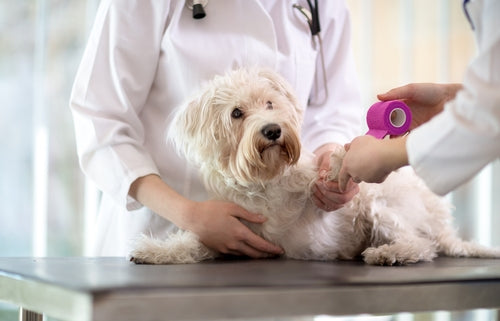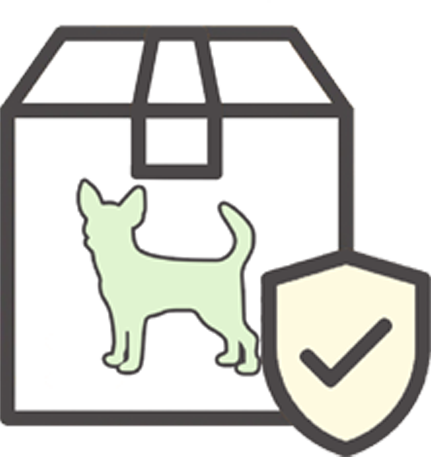What To Do If Your Dog Cuts Their Pad And How To Prevent It From Happening
Friday, January 04, 2019 05:34:58 PM America/Los_Angeles
Picture this: your dog is running outside on the fresh grass, playing fetch and loving life. When you call her to come inside, you notice some drops of blood. After a momentary freak out, you realize the blood is coming from the pad on her foot.
Nothing can damper a dog’s spirit quite like cutting the pad on their paw. Their feet are what they use to explore the world so especially for an active dog, this can really be hard on them. Although this can be scary and is quite the inconvenience, a cut pad is usually only a minor injury and often you can take care of it yourself. This guide will help walk you through what to do and will also give you tips on how to prevent this from happening to your dog in the future.
Call Your Veterinarian
Often, you will be able to take care of your dog’s pad at home, and your vet can advise you on what to do. If the bleeding is severe, the cut is deep, or the pad is completely cut off, your vet will likely advise you to bring your dog in to the office. Dogs don't always show that they are in pain, so you can't rely on how they are acting to know how severe the cut is. Get a good look at the wound before deciding whether you can take care of it on your own or not.
Remember that safety always comes first, for both you and your pet. If you have a very large dog and/or you don’t feel confident taking care of the wound yourself (even if it is minor), head on in to the vet. If you do take care of the wound yourself and your dog is in a lot of pain, consider using a muzzle.
If your vet does advise that you take care of the cut at home, following are some steps to take to help it heal. You may want to take care of the wound on some potty pads so your dog doesn’t track blood around your house.

Clean the Wound
First, flush the wound with water or a saline solution. Then, use an antiseptic to disinfect the wound. This step can also help you see the wound clearly to determine how severe it is.
Superglue the Cut Together
If the cut is small, you can skip this step. If it is larger, you can use superglue to hold the cut together. Superglue is actually very similar to surgical glue.
By Lucky Business via Shutterstock
Apply Antibacterial Cream
This can help the wound heal, and some creams come with pain relief, so this can help your dog feel better as well.
Wrap The Wound
You can use gauze and then wound wrapping. You can also use athletic tape, but make sure you don’t get the tape on your pet’s fur because that will hurt when it comes off! Make sure you change the dressing and inspect the healing process regularly. Don’t wrap the wound so tightly that you cut off circulation.
Cover The Wound
Depending on how interested your dog is in licking and getting at the wound, there are different options you can choose. If your dog leaves the wound alone, you may just be able to keep it wrapped with athletic tape or wound dressing. You could also cover the dressing with a sock to add an extra layer of protection. If your dog is bothered by the cut and keeps trying to bite and lick it, you may need to use a cone until the cut heals.
Regardless of how you choose to keep your dog from getting into the cut, be sure to keep the area clean. If it’s especially muddy outside, having indoor dog potty grass could be very helpful in keeping the wound clean. A good solution would be to have a DoggieLawn for your dog to use. This way, you don't have to risk them stepping on anything harmful outside while their paw is still healing.
Stopping it From Happening Again
If you’ve been through this already, you know that it’s no fun for you or your dog. The following are some tips to prevent a future dog pad injury:
-
If your dog has a cut that is still healing, limit rough play that could cause it to split back open
-
Inspect dog’s play and walking area for sharp pieces (sticks, glass, plastic, rocks, walnut shells, etc.)
-
Any time it’s not safe for your dog to go outside, use an indoor dog bathroom.
-
Use dog booties when walking on the street or sidewalk
-
Avoid walking on salted roads in the winter (wash your dog’s feet when you return if you do)
-
Make sure pavement is cool to the touch in the summer
-
Wash and inspect your dog’s pads regularly
Any time you see blood, your alarm bells start to go off, but if you take care of a dog’s pad injury correctly, this can be a relatively minor injury and just a temporary inconvenience for you and your dog.


